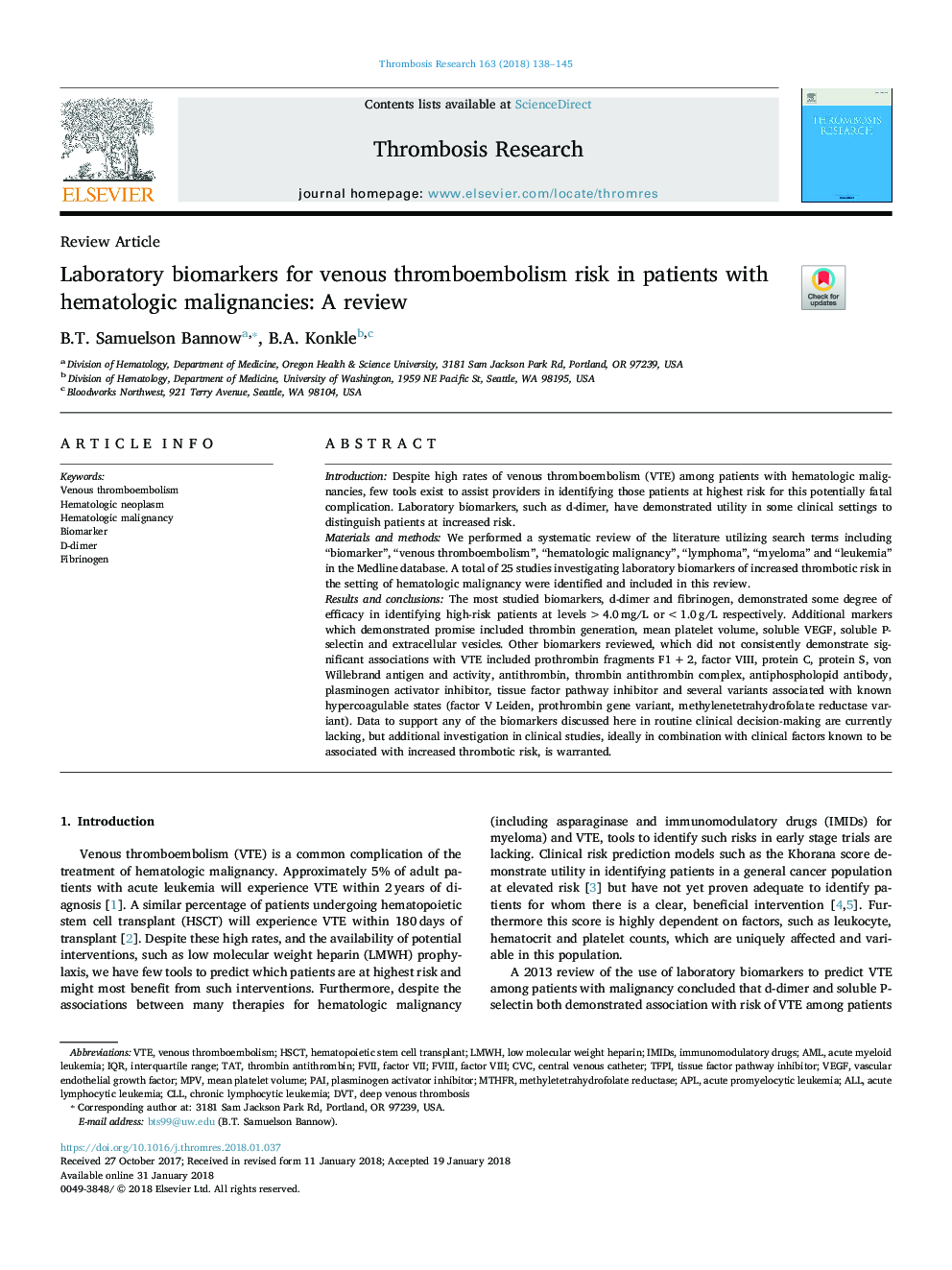| Article ID | Journal | Published Year | Pages | File Type |
|---|---|---|---|---|
| 8679622 | Thrombosis Research | 2018 | 8 Pages |
Abstract
The most studied biomarkers, d-dimer and fibrinogen, demonstrated some degree of efficacy in identifying high-risk patients at levels >4.0â¯mg/L or <1.0â¯g/L respectively. Additional markers which demonstrated promise included thrombin generation, mean platelet volume, soluble VEGF, soluble P-selectin and extracellular vesicles. Other biomarkers reviewed, which did not consistently demonstrate significant associations with VTE included prothrombin fragments F1â¯+â¯2, factor VIII, protein C, protein S, von Willebrand antigen and activity, antithrombin, thrombin antithrombin complex, antiphospholopid antibody, plasminogen activator inhibitor, tissue factor pathway inhibitor and several variants associated with known hypercoagulable states (factor V Leiden, prothrombin gene variant, methylenetetrahydrofolate reductase variant). Data to support any of the biomarkers discussed here in routine clinical decision-making are currently lacking, but additional investigation in clinical studies, ideally in combination with clinical factors known to be associated with increased thrombotic risk, is warranted.
Keywords
CVCFVIIIHSCTMPVMTHFRIMiDsTFPILMWHVTEHematologic neoplasmIQRAPLCLLFVIIAMLPAIplasminogen activator inhibitorHematologic malignancyBiomarkerTATVenous thromboembolismDVTDeep venous thrombosisImmunomodulatory drugsD-dimerFactor VIIIFactor VIIVascular endothelial growth factorVascular Endothelial Growth Factor (VEGF)Fibrinogenacute myeloid leukemiaacute lymphocytic leukemiaChronic lymphocytic leukemiaAcute promyelocytic leukemiamean platelet volumeinterquartile rangeTissue factor pathway inhibitorALLLow molecular weight heparinHematopoietic stem cell transplantCentral venous catheter
Related Topics
Health Sciences
Medicine and Dentistry
Cardiology and Cardiovascular Medicine
Authors
B.T. Samuelson Bannow, B.A. Konkle,
